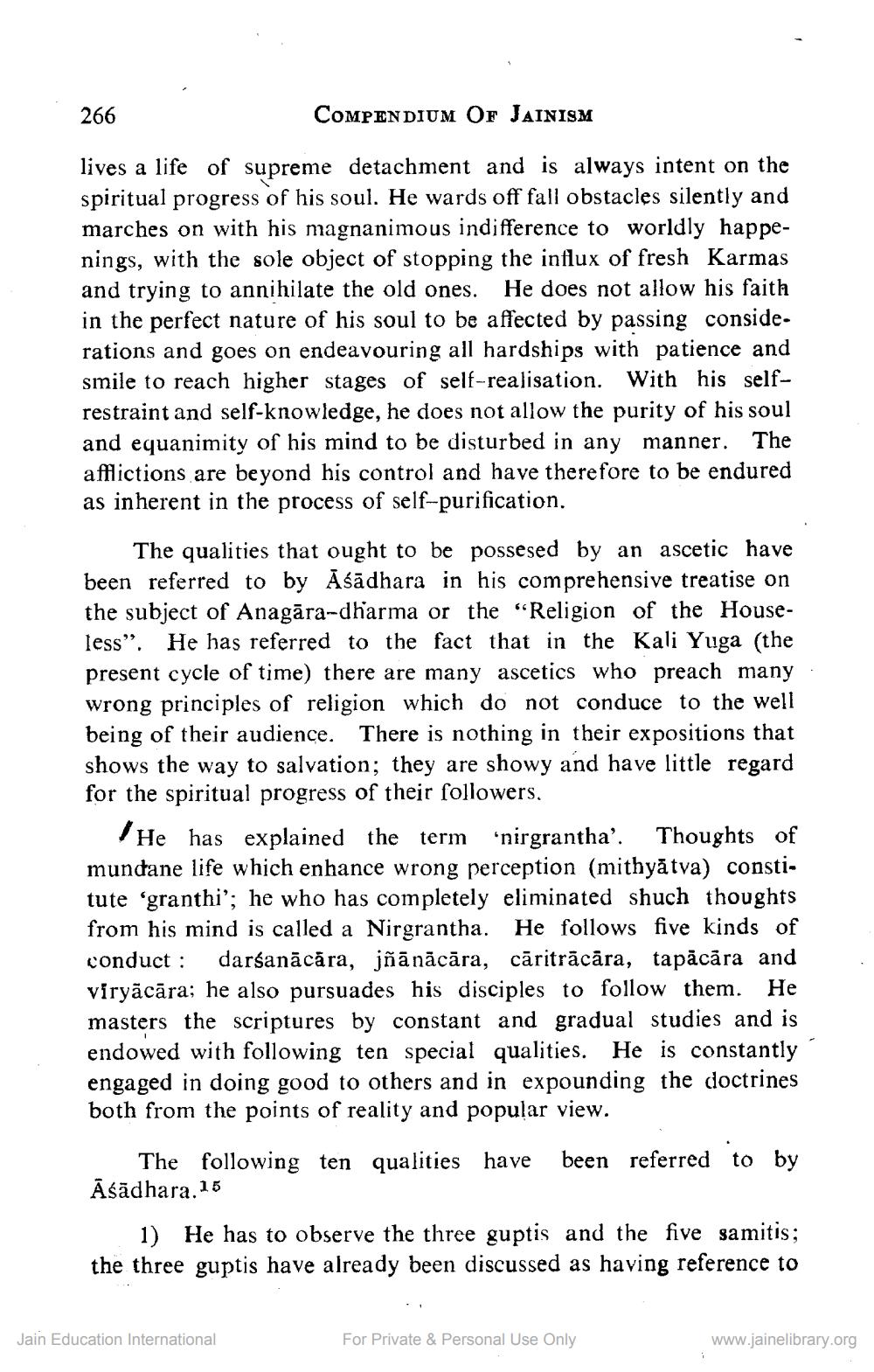________________
266
COMPENDIUM OF JAINISM
lives a life of supreme detachment and is always intent on the spiritual progress of his soul. He wards off fall obstacles silently and marches on with his magnanimous indifference to worldly happenings, with the sole object of stopping the influx of fresh Karmas and trying to annihilate the old ones. He does not allow his faith in the perfect nature of his soul to be affected by passing considerations and goes on endeavouring all hardships with patience and smile to reach higher stages of self-realisation. With his selfrestraint and self-knowledge, he does not allow the purity of his soul and equanimity of his mind to be disturbed in any manner. The afflictions are beyond his control and have therefore to be endured as inherent in the process of self-purification.
The qualities that ought to be possesed by an ascetic have been referred to by Aśādhara in his comprehensive treatise on the subject of Anagāra-dharma or the “Religion of the Houseless". He has referred to the fact that in the Kali Yuga (the present cycle of time) there are many ascetics who preach many wrong principles of religion which do not conduce to the well being of their audience. There is nothing in their expositions that shows the way to salvation; they are showy and have little regard for the spiritual progress of their followers.
He has explained the term 'nirgrantha’. Thoughts of mundane life which enhance wrong perception (mithyātva) constitute 'granthi'; he who has completely eliminated shuch thoughts from his mind is called a Nirgrantha. He follows five kinds of conduct : darśanācāra, jñānācāra, cāritrācāra, tapācāra and viryācāra; he also pursuades his disciples to follow them. He masters the scriptures by constant and gradual studies and is endowed with following ten special qualities. He is constantly engaged in doing good to others and in expounding the doctrines both from the points of reality and popular view
The following ten qualities have been referred to by Āsādhara. 15
1) He has to observe the three guptis and the five samitis; the three guptis have already been discussed as having reference to
Jain Education International
For Private & Personal Use Only
www.jainelibrary.org




